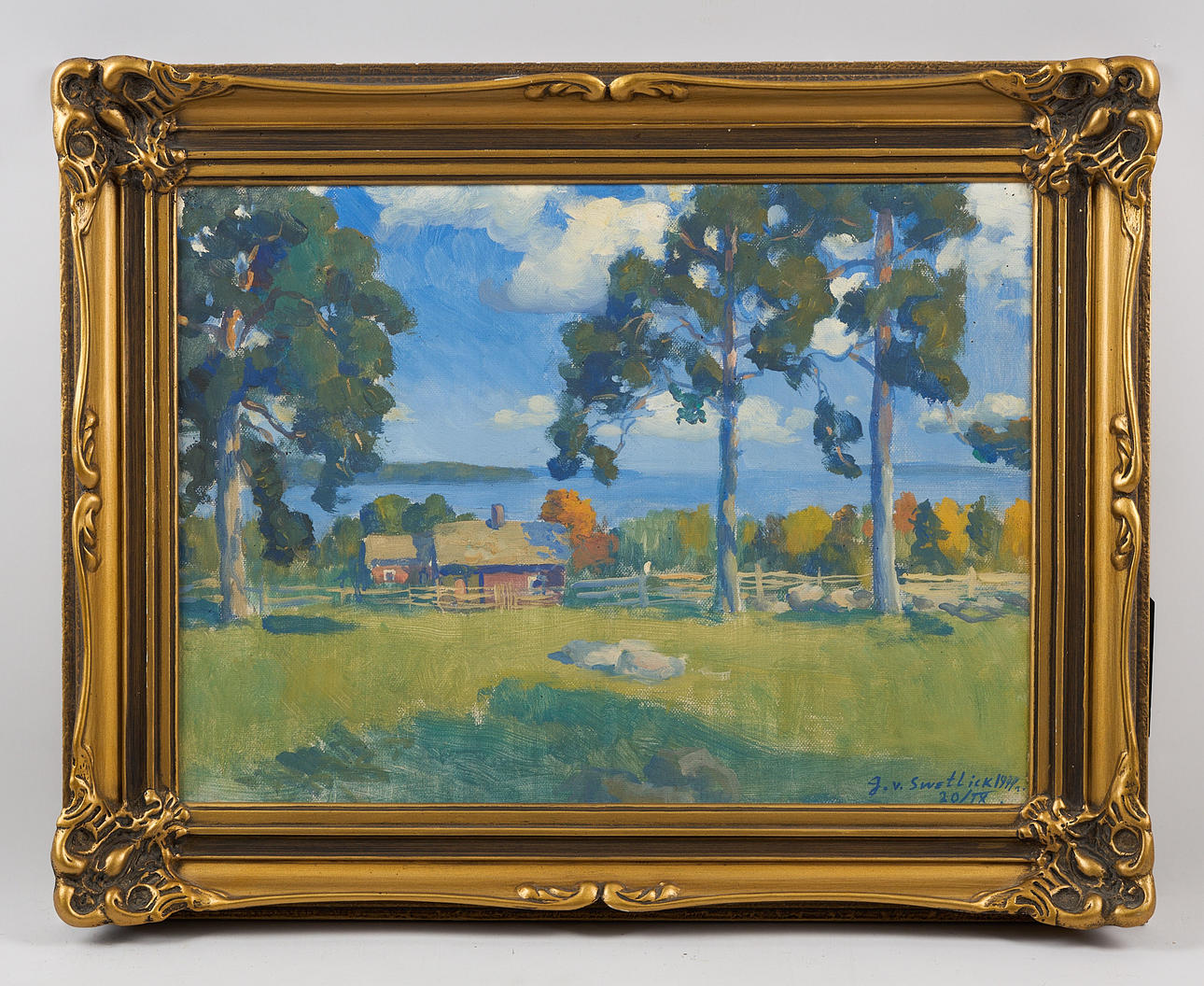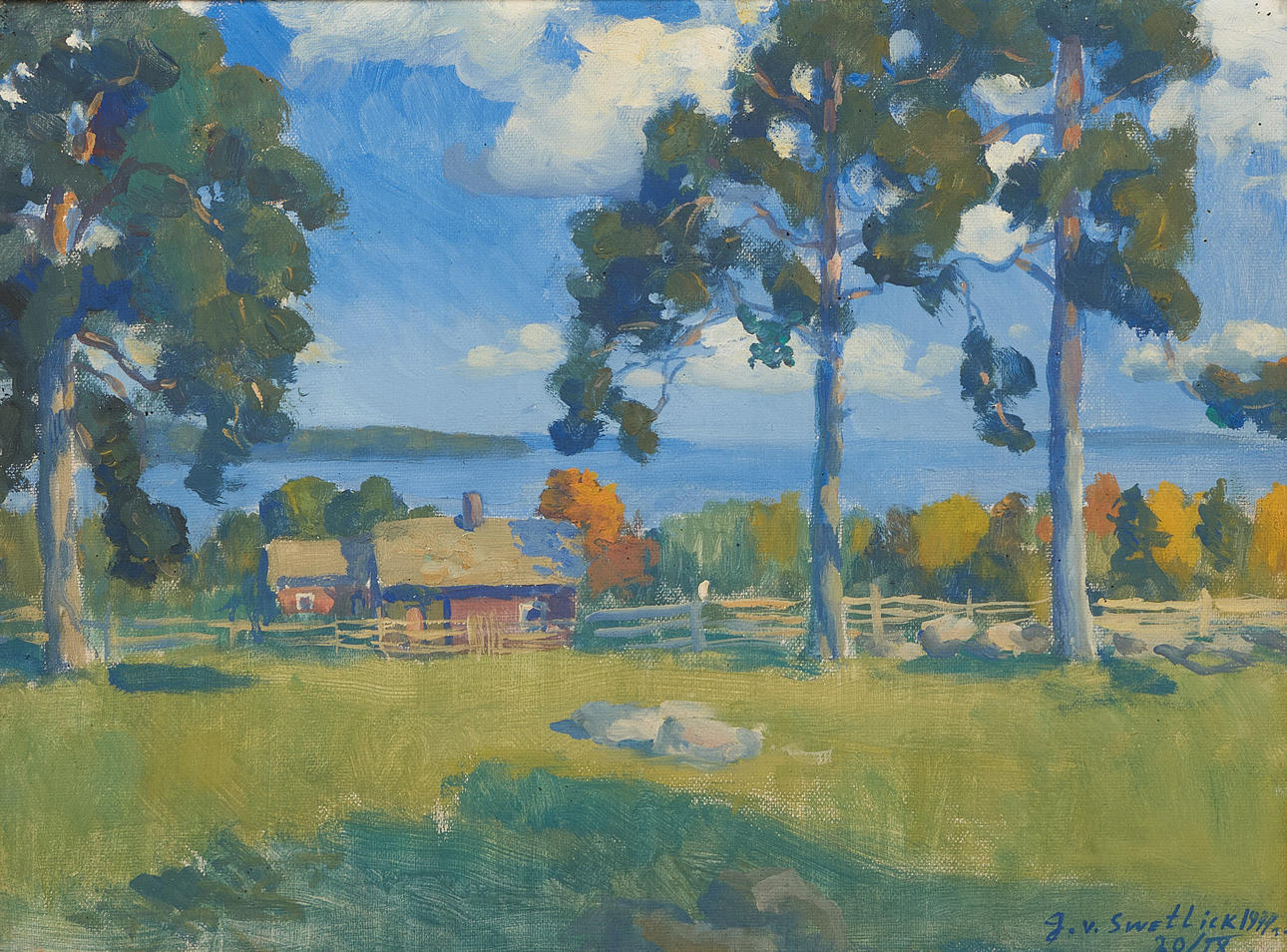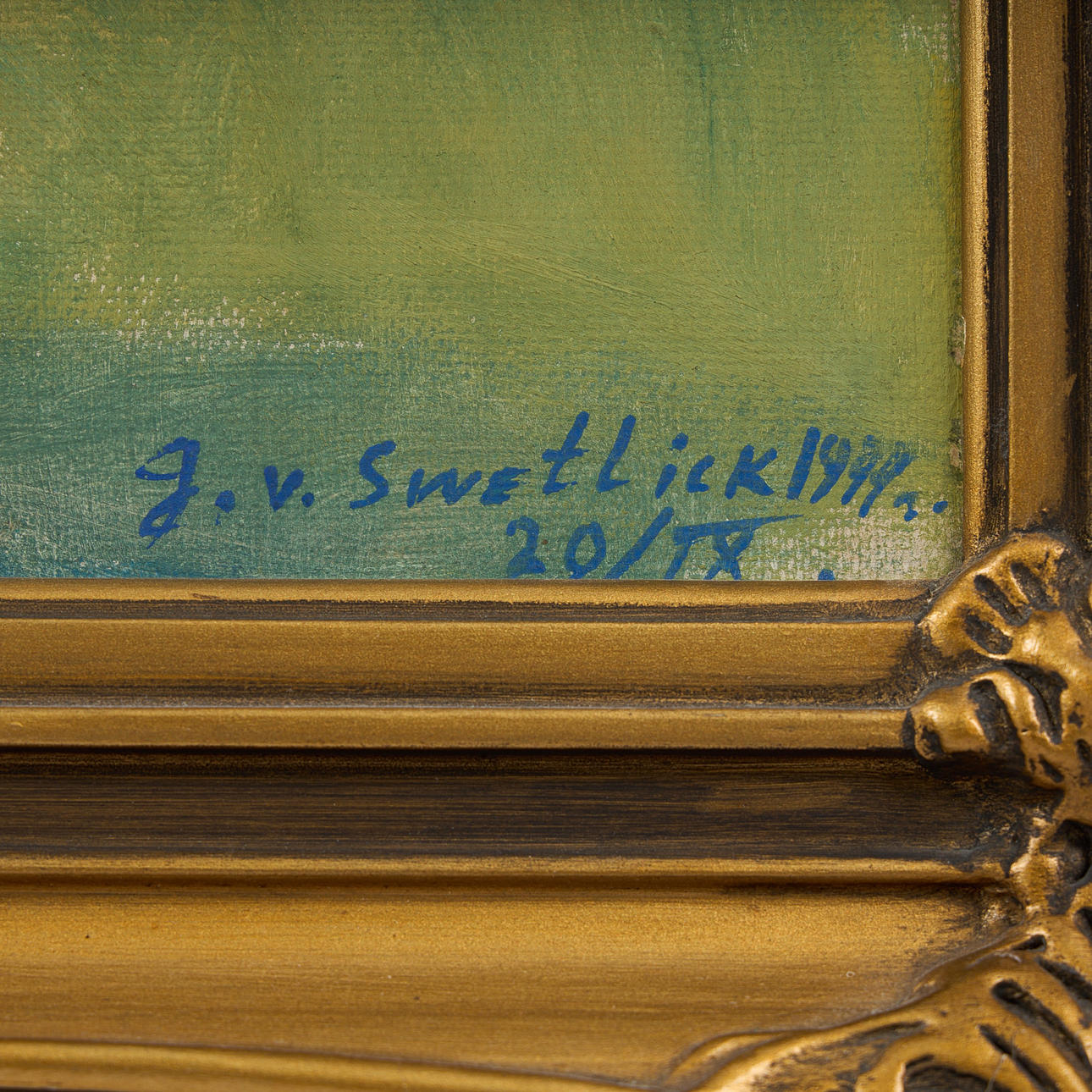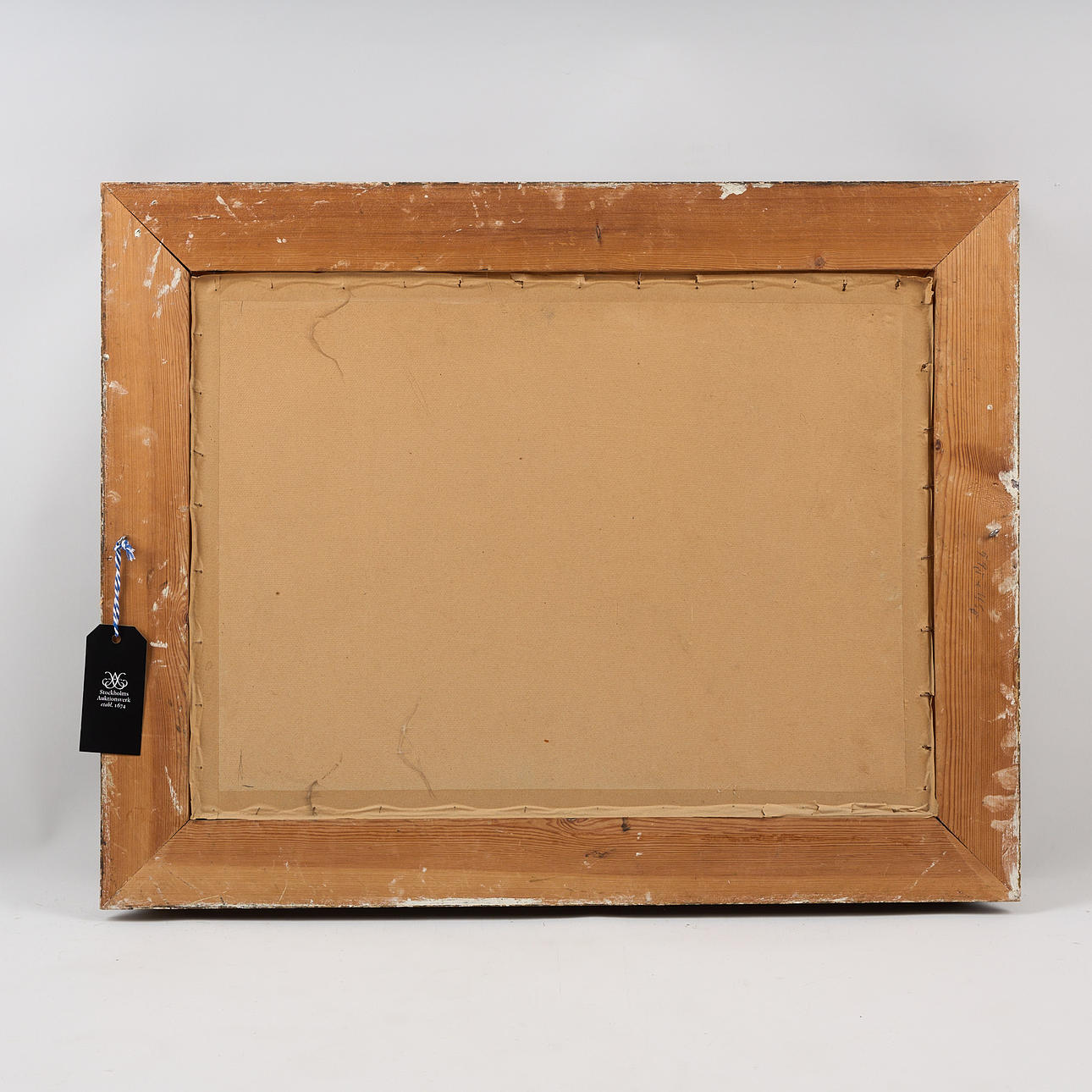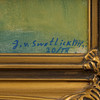
GEORGES VON SWETLIK. Early autumn day, signed and dated 20 IX 1944, tempera on panel.
This auction is closed, but maybe you like the following items?



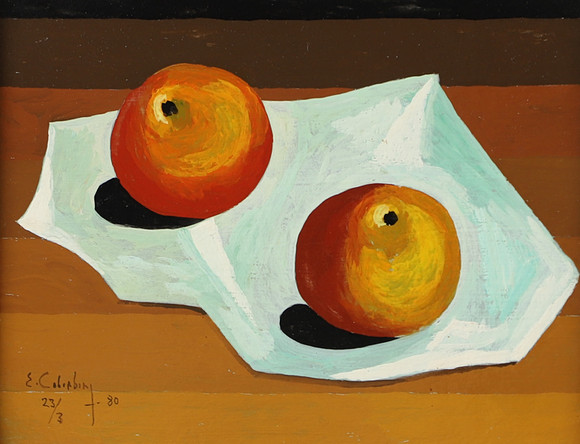

Description
44 x 60 cm, 60 x 75 cm.
GvS used different spellings of his name throughout his life, from 'Giorgij Svetlick' to 'Georges von Swetlik'. This was due to several factors, including the historical background of his family's name and how it was transliterated between different languages. His family came to Finland in 1923 as refugees after the Russian Revolution. The name is feudal and has roots in Bohemia.
This painting is believed to have been painted in 1944, one day after the armistice between Finland and the Soviet Union. It was probably painted in Sörnäinen prison, where GvS was being held in protective custody, falsely accused as a spy. The painting may have been commissioned by someone in the prison, based on a photo or postcard. During his time in prison, GvS painted two altarpieces in the Katajanokka prison church, which later became a hotel. Prisoners were models for his art. It has long been unknown that he painted these paintings, and it has been thought that a Russian prisoner of war was the artist. GvS was often misunderstood as an artist and encountered resistance, partly due to the negative attitude towards Russia at the time. His experiences as an artist and refugee shaped his artistic path, which may explain why he was not as well known as his Finnish colleagues. The prison painting is an important historical artifact, both because it was painted during a dramatic time and because it provides insight into GvS's life and artistic expression under difficult circumstances.
We would like to thank Riggert Munsterhjelm for his help in cataloging this work.
Condition
The overall impression is good.
Resale right
Artist/designer
Georges von Swetlik (1912–1991)
Theme
Do you have something similar to sell? Get your items valued free of charge!
Bidding
Have your item valued free of charge.
Bid history
| 6 | 24 May, 07:41 | 800 EUR |
| The reserve price of 800 EUR was met. | ||
| 6 | 24 May, 07:40 | 750 EUR |
| 5 | 23 May, 03:55 | 470 EUR |
| Show all 15 bids | ||
Description
44 x 60 cm, 60 x 75 cm.
GvS used different spellings of his name throughout his life, from 'Giorgij Svetlick' to 'Georges von Swetlik'. This was due to several factors, including the historical background of his family's name and how it was transliterated between different languages. His family came to Finland in 1923 as refugees after the Russian Revolution. The name is feudal and has roots in Bohemia.
This painting is believed to have been painted in 1944, one day after the armistice between Finland and the Soviet Union. It was probably painted in Sörnäinen prison, where GvS was being held in protective custody, falsely accused as a spy. The painting may have been commissioned by someone in the prison, based on a photo or postcard. During his time in prison, GvS painted two altarpieces in the Katajanokka prison church, which later became a hotel. Prisoners were models for his art. It has long been unknown that he painted these paintings, and it has been thought that a Russian prisoner of war was the artist. GvS was often misunderstood as an artist and encountered resistance, partly due to the negative attitude towards Russia at the time. His experiences as an artist and refugee shaped his artistic path, which may explain why he was not as well known as his Finnish colleagues. The prison painting is an important historical artifact, both because it was painted during a dramatic time and because it provides insight into GvS's life and artistic expression under difficult circumstances.
We would like to thank Riggert Munsterhjelm for his help in cataloging this work.
Condition
The overall impression is good.
Resale right
Artist/designer
Georges von Swetlik (1912–1991)
Theme
Do you have something similar to sell? Get your items valued free of charge!

